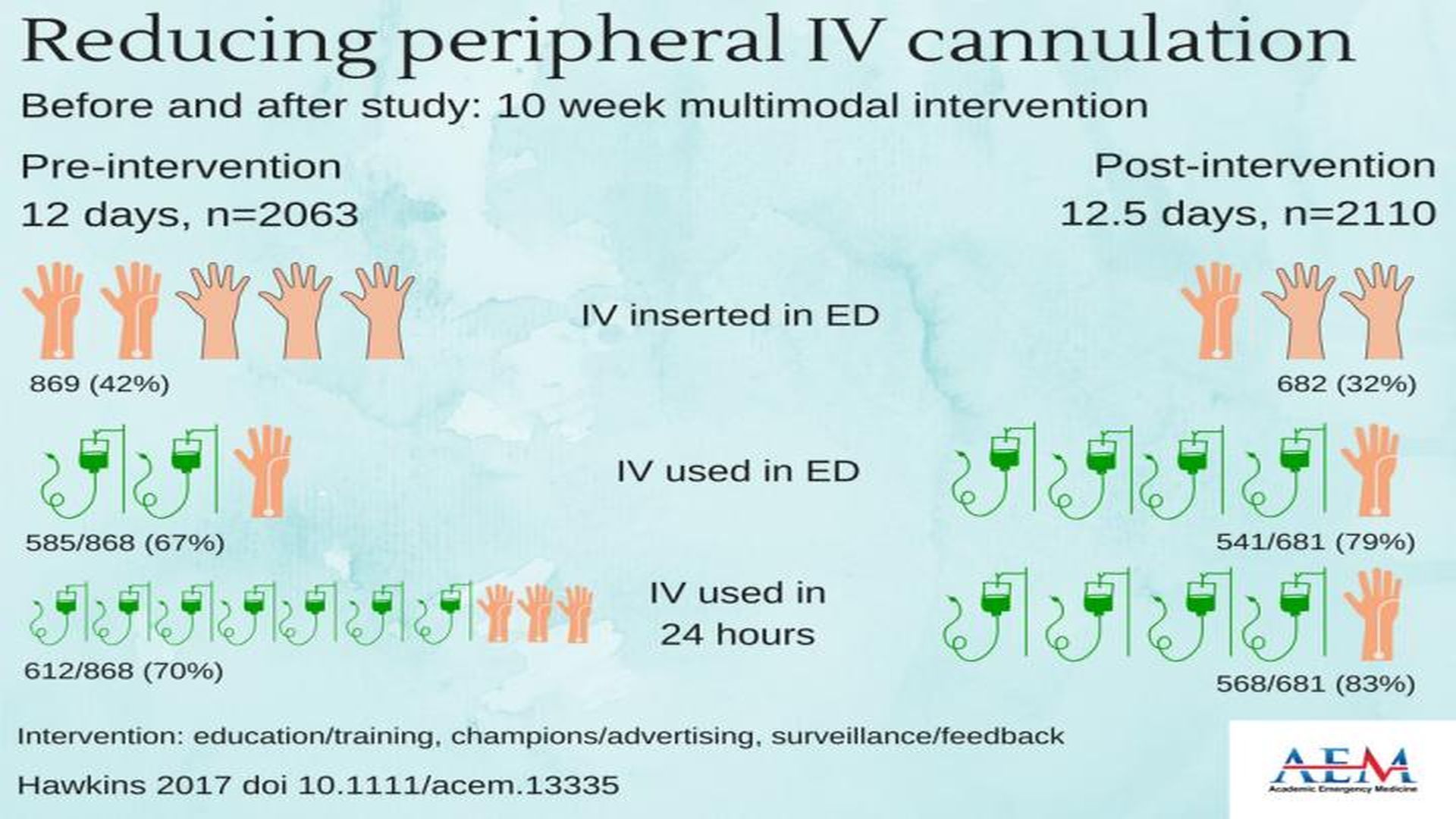Multimodal Intervention Can Reduce PIVC Insertion in the Emergency Department


Before and after study: 10 week multimodal intervention. Courtesy of Kirsty Challen, BSc, MBChB, MRes, PhD, Lancashire Teaching Hospitals, United Kingdom.
Peripheral intravenous cannula (PIVC) insertion in the emergency department can be reduced using a multimodal approach designed to support critical thinking and promote clinically appropriate peripheral intravenous cannula insertion and use. That is the primary finding of a study to be published in the January 2018 issue of Academic Emergency Medicine (AEM), a journal of the Society for Academic Emergency Medicine (SAEM).
The lead author of the study is Tracey Hawkins in the Department of Emergency Medicine at Royal Brisbane and Women's Hospital in Brisbane, Queensland, Australia.
The study, by Hawkins, et al, showed that multimodal intervention not only reduced PIVC placement in the ED, it also increased the percentage of PIVCs placed that were used. These findings suggest that this program benefits patients and health services alike, with potential for large cost savings.
Ali Tann, BSN, RN, CEN a registered nurse in the emergency department at IU Health Methodist Hospital, Indianapolis, commented, "Many PIVs are placed because we know that labs will be ordered, but may not be sure about fluids and/or meds and don't want to stick the patient too many times. Simply stated, the more sticks the unhappier the patient. But ultimately, in order for PIV campaigns to be successful, there needs to be more consensus among the providers. In other words, if the gut works, use it!"
Source: Society for Academic Emergency Medicine (SAEM)
Comprehensive Strategies in Wound Care: Insights From Madhavi Ponnapalli, MD
November 22nd 2024Madhavi Ponnapalli, MD, discusses effective wound care strategies, including debridement techniques, offloading modalities, appropriate dressing selection, compression therapy, and nutritional needs for optimal healing outcomes.
Voices of Resilience: Q&A With the Editor of "Corona City: Voices From an Epicenter"
March 1st 2024Step into the diverse and poignant world of "Corona City: Voices From an Epicenter" with editor Lorraine Ash, MA. In this insightful Q&A, learn about the origins of this remarkable anthology, the challenges faced in capturing raw, unfiltered narratives of the COVID-19 pandemic, and the lasting impact of these stories on readers and communities alike.